Easy ways to reduce your carbon footprint
Living a more eco-friendly lifestyle doesn't need to be expensive. With these tips on how to reduce your carbon footprint, you will actually save (or even make) money.

Credit: Man As Thep, peiyang, Mark Rademaker – Shutterstock
Scientists have warned that we need to try to keep global warming below a 1.5°C temperature increase, or else we could face significant environmental impacts.
The 'we' applies to all of us, from governments to businesses to individuals. And yes, individuals can make and are making a big difference.
If you think you are too small to make a difference, try sleeping with a mosquito – Dalai Lama
We've put together this list of 40 simple (and often surprising) changes that we can all make to reduce our carbon footprint, live more sustainably and save money.
All of the changes below make a real difference. But, the biggest wins are: fly less, eat less meat and in season, buy less (or used), shop local and switch to green energy if possible.
What is a carbon footprint?
A carbon footprint is the amount of CO2e* that we produce in our day-to-day lives. We all have a carbon footprint, but the key to living more sustainably is making conscious changes to reduce our individual CO2e contributions as much as possible.
When reducing your carbon footprint, try not to put pressure on yourself to live perfectly. Making some easy changes to your daily habits will allow you to live a more sustainable, eco-friendly lifestyle.
What is your carbon footprint?
The average person's carbon footprint in the UK is currently 12.7 tonnes CO2e. This needs to be brought down as quickly as possible to slow down and then reverse climate change.
In the latest edition of 'How Bad Are Bananas', Mike Berners-Lee suggests we should each aim to cut our CO2e contributions to just five tonnes per year.
Wondering how to calculate your current carbon footprint? Try this WWF calculator.
* CO2e means carbon dioxide equivalent, which includes CO2 and other greenhouse gases.
40 best ways to reduce your carbon footprint
Here are the best and easiest ways to reduce your carbon footprint immediately:
-
Choose a green energy supplier

Switching to an energy supplier that uses 100% renewable energy is one of the easiest ways to significantly slash your carbon footprint right away.
Tariffs with some green energy providers, like Octopus Energy, can be even more competitive than the 'Big Six' energy companies for most households.
Cutting your carbon footprint while saving money makes this one a no-brainer.
Since energy prices are currently at an all-time high, most energy providers aren't taking on new customers. Our advice is to stay with your current supplier. Find out more in our guide to energy bills.
-
Avoid investing in cryptocurrencies
In one of our recent National Student Money Surveys, we found that the proportion of students investing in cryptocurrencies had tripled since 2020.
But, what many don't realise is that the mining of cryptocurrencies generates tens of millions of tonnes of CO2e each year due to being so energy-intensive.
In fact, some experts have predicted that Bitcoin alone (not even including other types of cryptocurrencies) could increase the world's warming by 2°C in about 20 years.
As a general rule, cryptocurrency is not necessary for day-to-day life. And especially as you could also lose money from investing, it's best avoided if you're trying to reduce your carbon footprint.
-
Use WiFi instead of mobile data
Using WiFi instead of mobile data is a small change, but a really easy one to help reduce your carbon footprint.
It's been suggested that using mobile data is over twice as energy-intensive as WiFi. This difference in energy usage will be most marked when using your phone to download and stream films and other big files.
Is slow WiFi stopping you from using it more often? Try these ways to improve your WiFi speed.
And if you're reading this using mobile data but there's the option to use free WiFi, this is a change you could make right now!
-
Keep electrical devices for as long as possible
It can be tempting to get the latest models of phones, laptops or games consoles as soon as they come out. But, think about if you really, really need them.
It can be a bad habit, both financially and environmentally, to buy new devices while your current ones still work. Electrical devices are incredibly energy-intensive to manufacture and dispose of. So, it's best to make good use of the ones you own to reduce your carbon footprint.
Always recycle old phones to give them a second life. You'll even get cash for them too.
-
Use an energy-saving plug
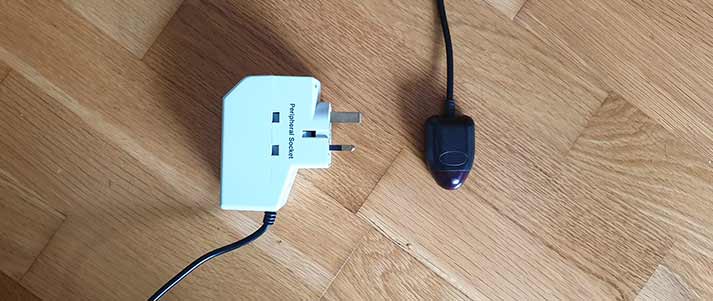
Getting an energy-saving plug (like this one) is such a simple way to reduce your carbon footprint at home.
In the picture above, there's a black sensor that connects to the plug's wire. This syncs with your remote.
Each time you press the power button on your remote, the sensor will pick it up and turn off the TV completely, rather than just putting it on standby. It will also switch off any devices that are linked to the TV like speakers, saving time and energy.
If you have a relatively new TV, it shouldn't use too much energy on standby. But, using one of these plugs could still make a bit of a difference.
There's a small initial cost to buy an energy-saving plug. There is, however, the potential for you to save money throughout the year as it could lead to lower energy bills.
-
Use a dishwasher instead of washing dishes by hand
If you're lucky enough to have an energy-efficient dishwasher in your student house, it saves water, time and CO2e emissions compared to washing dishes by hand.
This is the case when you use a full dishwasher at a low temperature. So, be careful to only run it when it's filled, and you'll be on track to reducing your carbon footprint.
-
Wash clothes less
While we're definitely not suggesting you should avoid washing clothes when they genuinely need a clean, avoid washing clothes before they actually need it.
Washing machines use a lot of water and energy, and therefore produce a fair amount of CO2e. But small changes to your laundry habits will really help.
Wash clothes at lower temperatures (e.g. 30°C) and use the eco setting whenever possible to minimise the amount of carbon dioxide that's being emitted.
Avoid the drying function and tumble dryers which are even more energy-hungry. Instead, choose to air-dry clothes. You can even use a dehumidifier if you want to speed things up.
Buying eco-friendly products like non-toxic and biodegradable laundry tablets will also make a difference.
We list some guidelines on how often different types of clothes can be worn before they're washed in our guide to using a washing machine.
And there are plenty more ways to save energy...
-
Cut energy use at home
Being careful to only use the energy you need at home has the benefit of saving you money on bills and reducing your carbon footprint.
Here are some examples of easy changes you can make to use less energy at home:
- Replace old lightbulbs (especially halogens) with LEDs. They use 85% less energy, last 10 times longer and produce the same amount of light.
- Switch off lights when there's natural light or you're not in the room.
- Put on more layers of clothes instead of putting on the heating.
- Try energy-efficient ways to keep cool in hot weather.
- Be mindful of how much water you use, for example by having shorter showers and only boiling the water you need.
- Always cover pans.
- Ask your landlord to add or improve loft insulation.
- Order a free smart meter from your energy supplier.
-
Shop local and in season
Shopping locally is a big way to reduce your carbon footprint. In an ideal world, it would be great to only ever buy things that have been grown or made a walking distance away. But let's face it, that isn't always an option.
If you're not able to buy something from your local area, or even from the UK, avoid buying products that have been transported by plane.
It's not always clear how supermarket food has been transported. But, think about whether it's realistic for it to arrive by ship if coming from abroad (e.g. bananas have a better chance of staying fresh after a long boat journey than berries, as they're thick-skinned and sturdy).
Buying foods that are in season in your country ties into this. So, have a go at changing your diet with the seasons.
To better understand the carbon footprint of different food, we highly recommend reading 'How Bad Are Bananas'.
-
Eat less meat, fish and dairy
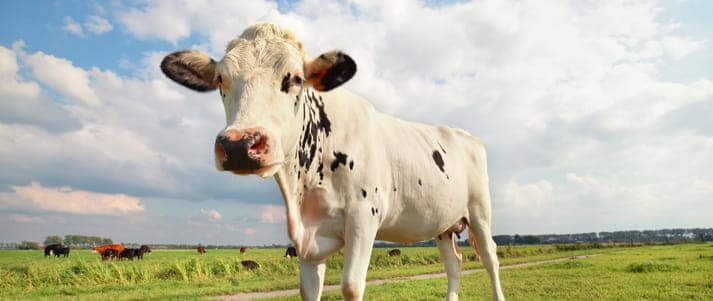
If you eat meat, fish and dairy, you don't necessarily need to cut them out of your diet completely. Instead, it helps to lower your carbon footprint if you focus on eating less and buying local and sustainable produce.
Beef and king prawns typically produce the largest amount of greenhouse gases in their production, so consider switching to chicken for some meals.
When buying fish, look at the packaging to see if it's been sustainably sourced. This means the fish has been caught in a way that minimises the impact on the ocean. Use the Good Fish Guide tool to compare how sustainable different seafood is.
You could also think about choosing veggie or vegan alternatives to meat, fish and dairy more often.
Generally, vegan alternatives are better for the environment and taste just as good. They can even be cheaper than meat versions. For example, Quorn mince sometimes costs less than beef mince.
However, some vegan products are more eco-friendly than others. It's worth doing some research to find the right products for you and the planet.
Comparing the environmental impacts of non-dairy milk can be particularly difficult. There's a handy chart in this BBC article that shows the differences in their emissions, land use and water use.
As well as thinking about the types of food you're buying, you can also reduce your carbon footprint by avoiding food waste and only buying food that you'll eat. This brings us to our next point...
-
Only buy food you will eat
The UK produces millions of tonnes of food waste every year. Food (especially meat) takes a lot of energy to grow and transport. So, there are significant CO2e embodied emissions in the supply chain.
For it to then be thrown into landfills is a total waste, and decomposing food releases plenty more greenhouse gases.
When you factor in that a lot of food has single-use plastic packaging (something else to avoid), it's clear that food wastage is a massive eco issue – not just a social one.
You can avoid buying food unnecessarily, and save meals from going to waste in the process, by using apps like Too Good to Go and Olio.
For some food that is soon to go bad, like bread, pop it in the freezer. Here are foods that can be frozen.
Sticking to a meal plan will also help you know exactly what you'll need to buy for the week before going to the shops.
If, despite your best efforts, you still end up binning some food, the next tip will help.
-
Get a worm bin
The thought of getting a worm bin (yep, a bin with worms in it) may seem a little odd at first. But in reality, it's an easy and affordable way to reduce your carbon footprint.
When food rots in a landfill, it produces methane, a harmful greenhouse gas. However, with worm bins, food waste gets converted into fertiliser and the amount of greenhouse gas emitted from them should be much lower compared to food in a landfill.
Here's a great video on how to make your own worm bin.
If you're not digging the worms, a normal compost bin is still a decent solution.
-
Try edible insects
Did you know that eating insects can be good for you and our planet? Yes, really!
Insects are an incredible source of protein. And compared to other protein sources like beef and chicken, they take a lot less space, water and feed to produce. Their carbon footprint is much lower.
Plus, edible insects are packed with good nutrients. They can even be made into flour to bake with.
When buying insects, make sure they're labelled as edible and fit for human consumption (you don't want to get bird feed by accident!). A good website for buying edible insects is Eat Grub.
-
Reduce flights

Credit: Nieuwland Photography – Shutterstock
For anybody who regularly travels the world by plane (especially on long-haul flights), flying will make up the majority of your carbon footprint.
This flight carbon footprint calculator shows that a return trip from Manchester to Los Angeles emits 3.4 tonnes of CO2e, half of a person's total target annual budget. Aviation emissions are more harmful than normal emissions too due to being released higher in the atmosphere.
Changes are slowly being made in the aviation industry, with more airlines opting for sustainable aviation fuels (SAF). If you do need to travel by plane, see if there are any airlines within your budget that use SAF.
-
Walk or cycle whenever you can
This tip might not be the most surprising, but it's definitely worth highlighting.
As well as being great for your health, and a good way to save money on transport, walking and cycling are the most eco-friendly ways to get about.
As further incentive to get around on foot or by bike more, find out how to save money on cycling and, better yet, how to make money from walking.
-
Drive carefully
Although we recommend walking or cycling wherever possible (or, if not, trying to get public transport), we get that it's sometimes hard to avoid travelling by car.
If you do need to drive somewhere, try to reduce the CO2e emissions of the journey by driving consistently and carefully, avoiding unnecessary acceleration or braking. This helps, both in terms of saving you money on fuel and lowering your car's carbon emissions.
-
Earn rewards for recycling
We all know that we should be recycling as much as possible to cut down on waste and live more sustainably. But did you know that you could actually earn rewards from recycling?
A lot of stores have recycling schemes that offer you free products or vouchers in return for empty containers. A few examples of stores with recycling schemes are Boots, Lush and John Lewis.
There are so many great recycling schemes around, such as ones that let you earn money or vouchers for your old clothes, laptops, plastic bags and more. To find out more, see this list of the best things to recycle for money.
-
Clean items before recycling them
As landfills produce a lot of CO2e, it's essential to recycle as much as possible to lower the amount of waste that gets sent to rubbish dumps.
Keep in mind, though, that not everything you chuck in the recycling bin will necessarily get recycled. Research what materials and types of items your local council accepts as recycling, and make sure you clean any food packaging before putting it in your green bin.
If something's stained with food, it's unlikely to actually get recycled and can often contaminate a whole batch. Spending a quick 10 seconds (if that) to wash things first could avoid the risk of them ending up in a landfill.
For more info, see our full guide to what you can and can't recycle.
-
Don't get paper receipts
A little-known fact is that a lot of receipts, despite seeming pretty innocuous, aren't recyclable. This applies to ones printed on shiny paper.
If you're at a self-checkout and you're asked whether you'd like a receipt to be printed, saying no saves that precious bit of energy and paper, avoiding unnecessary emissions of CO2e.
Although they require a small amount of energy to send, e-receipts are much more environmentally friendly than the paper equivalent. So you should always take up the option if it's there when it comes to larger purchases.
-
Get paperless bills
Like with receipts, most of the time, paper utility bills and bank statements aren't really necessary when there's the option to have them sent electronically.
As we've covered, using the internet does produce CO2e, but the emissions from sending and receiving an email are minimal compared to the production, postage and disposal of paper bills.
So, next time you're offered the option of paperless billing or statements, opt-in to minimise your carbon footprint.
-
Sell old things you don't use
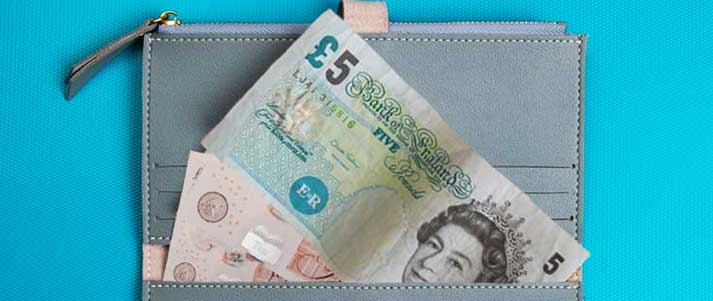
Credit: Yevgen Kravchenko, kamui29, Bell Photography 423 – Shutterstock
Selling your old belongings is an easy way to make money while reducing your (and the buyer's) carbon footprint.
By selling things you no longer want, they'll go to good use, rather than ending up in a landfill. It also means that, from the buyer's perspective, there's less need for a brand-new item to be manufactured.
In particular, it's worth thinking about selling clothes you no longer wear.
Fast fashion is a common but environmentally harmful practice, where loads of new clothes are bought but rarely worn. Keep in mind that each garment uses a lot of water and contributes to CO2e in its manufacturing, postage and disposal, so the more you buy and waste, the bigger your carbon footprint.
It makes a big difference to your carbon footprint to buy fewer quality new clothes, take good care of the ones you own and sell the items you no longer want.
Plus, you could also consider renting clothes, or lending out items from your wardrobe to others (it's a good way to make money). Find out more in our guide to the best clothes rental services.
eBay, Gumtree and Facebook Marketplace are all popular and easy places to sell used things. If you're happy to pass them on for free (or looking for freebies yourself), check out Freecycle.
You could also donate your old things to charity shops. This way, your items shouldn't end up in a landfill and you'll be contributing to a good cause. -
Shop second-hand
Charity shops, vintage stores and online marketplaces aren't just good for selling/donating your old things. They're also your best friends when it comes to sustainable shopping.
When you get into the habit of shopping second-hand, you realise just how many great things there are already in existence, waiting to be bought. Not everything needs to be bought brand new.
When possible, it's good to buy pre-loved items to save on the energy needed to manufacture, package and transport new goods to you.
-
Stop unwanted gifts
Vast amounts of unwanted presents end up in landfills every year, which is a ridiculous waste on so many levels. Think carefully about the gifts you buy for friends and family.
How likely are they to use them and for how long? There's no shame in asking for a wishlist.
Often, the issue is budget. Team up with other friends or family to buy a better quality and higher value present.
And, when thinking about what to buy, try these lovely eco-friendly gift ideas.
Secret Santa is another brilliant and fun way to cut down on the quantity of (often unwanted) Christmas gifts you buy and receive.
-
Use eco-friendly gift wrapping
Nicely wrapping a gift always adds an extra touch. But sadly, not all wrapping paper is recyclable. Since a lot of wrapping paper contains plastic (especially if it's laminated or has glitter), it often ends up in a landfill.
However, there are eco-friendly options. Check whether the paper is recyclable before you buy it. Alternatively, you can use brown paper (you can get it super cheap from Hobbycraft), or a reusable gift bag.
-
Make things from scratch
If you're skilled at crafts, making things like clothes and home decorations instead of buying them will help to reduce your carbon footprint.
Compared to factory-made items that have been transported across the country (or even the world), handmade things are much better for the environment.
There'll still be CO2e emissions from the transportation of your materials. But, you could cut this out by reusing old materials you already have at home.
For example, if you want to make a new tote bag, look in your wardrobe to find clothes you no longer wear. If, say, there's a t-shirt you haven't worn in years, you could upcycle it by taking it apart and using the material to make the bag.
If you decide to make money from selling your crafts, selling them locally, such as on a market stall, is a great eco-friendly option. -
Try swapping sites
Swapping sites are an incredible way to get new things for free while getting rid of things you no longer want (without them ending up in a landfill).
There will still be CO2e emissions from the postage of your new item coming to you and your old item being sent away. But, these emissions will be very small compared to buying something brand new.
To reduce your carbon footprint further, look out for in-person swapping events near you. You may be able to turn up with your old things and come home with new items, without the need for postage.
-
Borrow books from the library
If you're ever in need of a book, whether for uni or just generally, head to the library first before buying it. You could find it is available for free.
New books contribute to CO2e emissions through the process of printing, packaging and postage. However, going to the library lets you reduce your carbon footprint while saving money.
Find out where your uni ranks in the university sustainability rankings. -
Reduce plastic packaging
When you start taking notice of just how many things have single-use plastic packaging (particularly food) it's pretty overwhelming.
For many, it's not a realistic goal to entirely cut out single-use plastic, at least not immediately. But, buying products with minimal and recyclable packaging whenever possible will help.
When buying fruit and veg, avoid buying produce that's wrapped in plastic when there's the option to buy each item separately, like bananas or onions.
Also, if you're buying new clothes, try shopping at a sustainable fashion store that makes an effort to avoid single-use plastic packaging.
For loads of tips on how to use less plastic, see our guide to going plastic-free on a budget.
While we're on the topic of plastic, if you come across plastic litter, put it in a bin to ensure it's recycled and doesn't end up in our waterways.
-
Use refillable cleaning products
Cleaning products often come with a ton of toxic ingredients wrapped in single-use plastic packaging. Even if you try to recycle these empty bottles, chances are they'll end up in a landfill anyway.
Luckily, there are some great companies that sell refillable and eco-friendly cleaning products. You buy a sturdy container/spray bottle once, and simply get refills when you run out of product.
One good option is Homethings. Not only are they battling single-use plastic, but their products are also eco-friendly, vegan and don't contain any harmful ingredients.
On top of that, they cut a lot of the transport emissions by only shipping the tablets needed to make the cleaning sprays. All you have to do is fill the reusable bottle with water and pop the tablet in. Easy!
And to save even more money, you can use these homemade cleaning products to refill them.
-
Get reusable sanitary products
Reusable sanitary products like menstrual cups and period pants are a great way to save money and do your bit for the planet.
Many sanitary pads contain up to 90% plastic and tampons often have plastic wrapping and applicators. Their production and disposal cause pollution and fill up landfills, so swapping to reusable sanitary products can really make a difference.
These types of products require an initial purchase, but they'll save you money in the long run compared to buying new boxes of pads and/or tampons every month.
Find out more in our guide to getting free and cheap sanitary products.
-
Stop using cling film
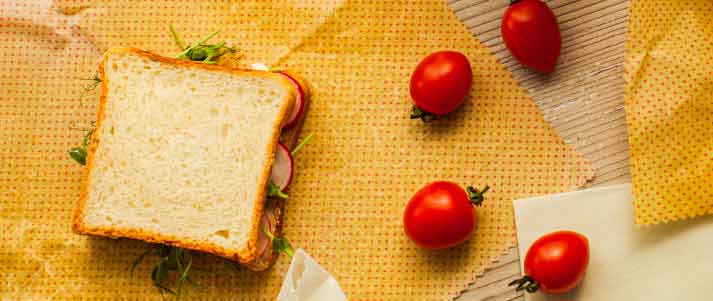
Credit: Oksana Shufrych – Shutterstock
Cling film is undeniably handy as a way to keep your food fresh. But unfortunately, as it's single-use plastic, it's really bad for the environment.
Luckily, there's a growing range of eco-friendlier alternatives. Wax wraps (like these) are a great option. They're slightly pricier than clingfilm, but as they're reusable, you should be able to get your money's worth out of them.
And, to store food in the freezer, you could get some reusable freezer bags.
-
Use your own takeaway cup
In the UK, billions of disposable coffee cups get used each year. A 2017 report by the government found that only around one in 400 disposable coffee cups were being recycled, with the majority ending up in landfills.
If more of us had a reusable coffee cup, there'd likely be a significant reduction in the number of disposable cups being used and made.
Through the manufacturing and disposal of billions of coffee cups each year, there's so much CO2e being emitted that could easily be avoided. Cutting down on our usage of disposable coffee cups, individually and as a country, could make a big difference.
Plus, some cafes even give you discounted coffee for bringing your own cup!
-
Use low-carbon websites
It's been estimated that if the internet was a country, it'd have the fourth largest carbon footprint. Simply loading a website requires energy, which leads to carbon being emitted.
The worst culprits are slow web pages, with lots of videos, uncompressed images and advertising tracking scripts, hosted on servers powered by fossil fuels.
When we previously checked, one popular tabloid website emitted 1.45g per visit, equating to 624 tonnes a month! BBC News was half that.
Save the Student runs on sustainable energy and has been carefully designed for speed and performance. Each visitor to this page emits just 0.15g of CO2.
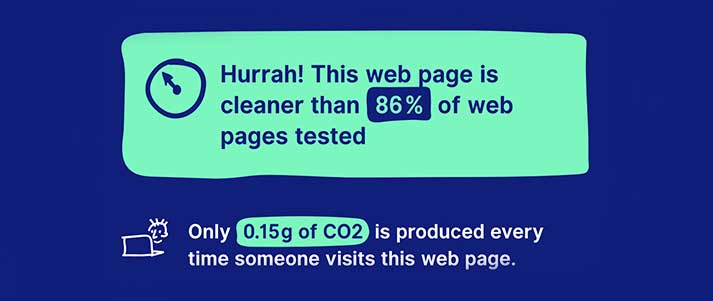
We also offset our carbon emissions by planting thousands of trees via Ecologi.
To reduce your carbon footprint (and potentially better protect your privacy) really consider switching your browsing habits.
See how your favourite sites compare with this website carbon calculator.
-
Stream in SD rather than HD
Be mindful of the impact of internet usage on the environment. When the choice is between streaming a film or TV show in standard definition (SD) or high definition (HD), consider choosing SD so that less energy is used.
Scientists at the UK's Royal Society found that streaming HD videos on a smartphone produces eight times more emissions than streaming in SD.
If you're streaming videos on a smaller device like a phone or tablet, you're unlikely to notice the difference in definition.
-
Unfollow people on social media
Not only can it be good for your mental health to unfollow people on social media that you don't engage with, but it can also help the planet.
The energy required to load big files like images and videos is a huge contributor to CO2e emissions. So if you're spending hours each day scrolling through Instagram posts that don't bring you joy, unfollowing some people or brands and using the app less is an easy way to reduce your carbon footprint.
Remember you can often 'mute' someone if unfollowing seems a bit awkward.
-
Unsubscribe from mailing lists
While you're in purge mode, start clicking that elusive 'unsubscribe' link at the bottom of emails that don't add any value to your life. Go through your spam inbox too.
Even if you don't open the emails, they take energy to send and then store.
Paper marketing materials delivered to your home have a larger footprint, as you'd expect. It can be a bit trickier to opt-out of paper mailing lists, usually requiring you to email or contact the company.
However, it has got easier to stop most junk mail. This Citizens Advice page explains how you can opt-out.
-
Plant trees
It's no secret that trees are essential for the planet. They absorb carbon, so the more CO2e that's being emitted from human lifestyles, behaviours and creations, the more trees we need.
Even if you don't have a garden, there are still loads of ways to help plant trees.
As we mentioned earlier, at Save the Student, we plant trees via Ecologi to offset our carbon footprint.
Or, you could try Treeapp. Each day, the app will show you a few short ads, and in return, they'll plant a tree on your behalf somewhere in the world.
You could also consider volunteering with a tree-planting scheme. Have a look online to find out about ones in your local area that you could get involved with.
And next time you're looking for a cheap gift for a loved one, think about donating money for a tree to be planted on their behalf. We explain this a bit more in our guide to the best birthday presents.
-
Get an ethical pension
If you have a pension from your job, it's worth checking what they invest it in.
The vast majority of company pensions still invest your money in fossil fuels by default. According to Make My Money Matter, £2 from every £10 you put into your pension is linked to deforestation.
Luckily, you can opt for an 'ethical fund'. Your pension is essentially your money. While it is invested to grow before you reach retirement age, it could be funding clean energy, green transport, reforestation and more. See Make My Money Matter's website for more info on how to set this up.
Similarly, if you invest money yourself, check where your money goes. There are tons of ethical and green companies and index funds to invest in. Your money will make a big difference!
-
Try passive cooking
Passive cooking is an easy way to reduce the amount of energy you use when cooking.
If you're cooking veg on the stove such as broccoli, or making pasta or rice, you can simply turn the heat off after cooking for 4 minutes and add a lid. The contents of your pan will continue to cook, so just take them out when they're cooked to your liking.
Chopping food into smaller pieces and batch cooking are also effective ways to save energy on cooking.
-
Encourage others to make changes
We can all do our bit to reduce our carbon footprint and help the planet, such as by making some of the easy changes suggested in this list.
But for our efforts to have a noticeable impact, it's important that others get involved too.
Talk to your friends and family about climate issues. You could share this guide with them to highlight simple things they can do to live more sustainably.
And to encourage bigger, more widespread changes, write to your MP to tell them what you hope to see the government do to address climate issues, both now and in the future.
If you're really passionate about the climate emergency, take a look at organisations like Greenpeace, Extinction Rebellion and The Green Party which frequently run mass petitions and activism to help raise awareness of the need for change.
Tweet us @savethestudent with any more ideas! If you're craving one more, look into homemade cleaning products.








